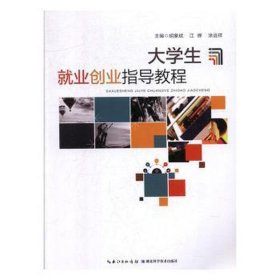
不确定环境下的进入-退出决策
本店经营正版新书 两天左右发货 有着急发货的请不要下单
¥ 6.16 2.2折 ¥ 28 全新
库存30件
北京朝阳
认证卖家担保交易快速发货售后保障
作者张永超、张娜 著
出版社东北大学出版社
出版时间2016-09
版次1
装帧其他
上书时间2024-12-26
- 在售商品 暂无
- 平均发货时间 32小时
- 好评率 暂无
- 最新上架
商品详情
- 品相描述:全新
图书标准信息
- 作者 张永超、张娜 著
- 出版社 东北大学出版社
- 出版时间 2016-09
- 版次 1
- ISBN 9787551714136
- 定价 28.00元
- 装帧 其他
- 开本 16开
- 页数 117页
- 字数 99999千字
- 【内容简介】
-
¡¡¡¡Entry-exit decisions apply to numerous practical problems. For example£¬ when to extract oil and when to stop the extraction£¬ when to issue a new policy and when to end it£¬ and when to let a kind of product enter a market and when to let the product exit the market£¬ etc. Therefore£¬ entry-exit decision problems attract a lot of researchers.
¡¡¡¡There are three approaches to study entry-exit decisions£¬ namely£¬ real option£¬ pure probability and optimal stopping. In this monograph£¬ we appeal to optimal stopping to deal with entry-exit decisions. The main reasons are as follows. On the one hand£¬ in the real option framework£¬ the regularity of payoff functions is a priori assumed£¬ while the optimal stopping approach intends to prove it. On the other hand£¬ although the pure probability and optimal stopping approaches are both to solve a optimal stopping problem£¬ we have to calculate density functions of some stopping times if applying the pure probability approach£¬ which is not easy£¬ whereas the optimal stopping one avoids such calculations.
¡¡¡¡We aim to obtain closed-form solutions of optimal entry-exit decisions for the cases£º costs depending on underlying processes£¬ implementation with delay£¬ and underlying processes following geometric Levy processes. In addition£¬ we provide a complete theory for optimal stopping problems with regime switching£¬ and use it to solve an exit problem. - 【目录】
-
Overview
1 Entry-exit decisions with linear costs
1£®1 Introduction
1£®2 An elementary introduction to optimal stopping problems
1£®3 The model
1£®4 An optimal exit time
1£®5 An optimal entry-exit decision
1£®6 Conclusions
2 Entry-exit decisions with implementation delay
2£®1 Introduction
2£®2 Some results concerning classical optimal stopping problems
2£®3 A useful transformation
2£®4 The model
2£®5 An optimal entry-exit decision
2£®6 Conclusions
3 Entry-exit decisions with underlying processes following geometric Levy processes
3£®1 Introduction
3£®2 Solving optimal stopping problems by Wiener-Hopf factorization
3£®3 The model
3£®4 An optimal entry-exit decision
3£®5 The effect of jumping on optimal entry-exit decisions
3£®6 Conclusions
4 Optimal stopping problems with regime switching£º a viscosity solution method
4£®1 Introduction
4£®2 Optimal stopping problems with regime switching
4£®3 An application
4£®4 Conclusions
List of Figures
Bibliography
点击展开
点击收起
相关推荐
— 没有更多了 —














以下为对购买帮助不大的评价